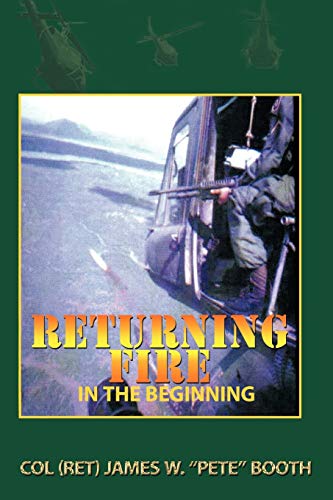
Returning Fire
by James W. Booth, Col.
"In the Beginning"
Popularity
2.99 / 5
* A book's popularity is determined by how it compares to all other books on this website.
Where to buy?
Buy from Amazon* If you buy this book through the link above, we may receive a small commission at no extra cost to you.
Returning Fire by James W. Booth, Col.
Details
Biography:
No
Page Count:
708
Published Date:
2011
ISBN13:
9781456745226
Description
Brief Summary
Returning Fire by James W. Booth, Col., presents a compelling historical account of the evolution and deployment of armed helicopters within the US Army. The narrative traces the genesis of these helicopters from the initial, unarmed Transportation Helicopter Companies (H-21 lift ships) in South Vietnam to the establishment of the Utility Tactical Helicopter Company (UTT) equipped with modified UH-1 helicopters. This definitive shift, from transport to heavily armed warfare aircraft, marked a pivotal moment in military aviation, influencing the way the US and other military powers would conduct aerial combat operations henceforth.
Main Themes and Topics
The book primarily focuses on the developmental trajectory of armed helicopters used in combat, spotlighting the adaptability and innovation demonstrated by the US Army under pressing circumstances in Vietnam. The story emphasizes themes of courage and ingenuity as the soldiers modified medical evacuation helicopters with makeshift weapon systems scrounged from old military resources. It also tackles the tension and collaboration between the branches of the military — notably between the Army and the Air Force — over jurisdiction and roles in aerial combat. Such dynamics underscore the evolution of military strategy and interdepartmental cooperation under the stresses of war.
Writing Style and Tone
James W. Booth, Col., delivers a factual and richly detailed account, vibrant with the voices of those who lived through the experiences he describes. The tone is both respectful and dramatic, providing an insider’s perspective into the camaraderie and valor of the troops involved in these early helicopter combat operations. Booth’s writing is both informative and evocative, effectively transporting the reader into the high-stakes environments faced by these pioneering soldiers.
Awards and Recognition
While specific awards for Returning Fire are not documented, the work contributes significantly to the historiography of military aviation, particularly in its well-researched and firsthand presentation of the introduction and effects of armed helicopters in combat operations.
Criticism
One potential criticism of Returning Fire may be its detailed technical descriptions, which, while providing depth and authenticity to the narrative, could overwhelm readers not well-versed in military jargon or the technical aspects of helicopter modifications. However, for those interested in military history and aviation, this detail may enhance the reading experience by providing insights into the operational and strategic complexities faced by the US Army during the Vietnam War.









